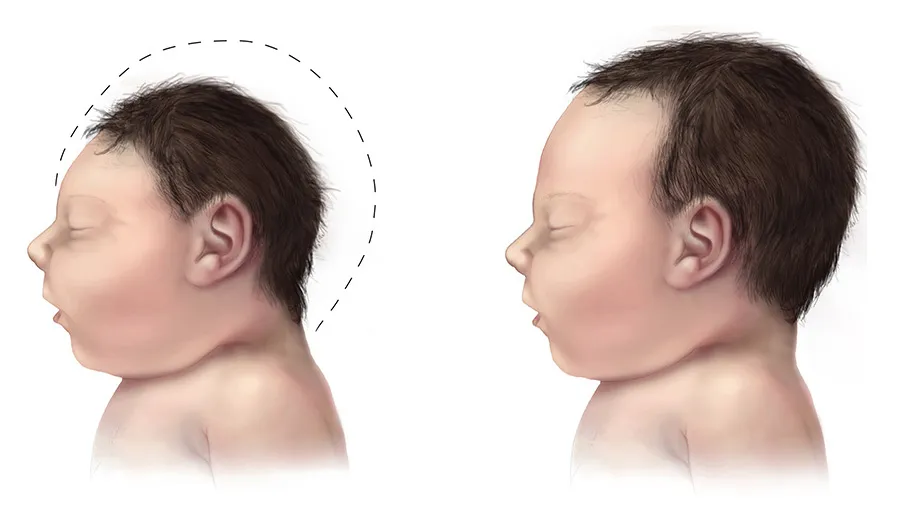Adopting a newborn baby is a beautiful and transformative journey filled with hope, joy, and the promise of new beginnings. It’s a decision that requires careful thought, preparation, and a deep commitment. If you’re considering this path, you likely have many questions and emotions swirling around.
Whether you’re just starting to think about a newborn baby for adoption or are ready to begin the process, it is essential to be well-informed and prepared. To help guide you, we at Omega Pediatrics have outlined the ten essential steps of a newborn baby for adoption.
We’ll walk you through the crucial steps to ensure you’ll navigate the process with ease. Each step will provide you with the information and support you need for this incredible journey.
The Process of Newborn Baby for Adoption: Be Prepared and Well-Informed
Step 1: Understand the Types of Adoption
When you’re contemplating adopting a newborn, understand the various types of adoption available. Each type has its unique processes, requirements, and implications. Knowing your options will help you make an informed decision.
Domestic Infant Adoption
This involves adopting a newborn baby within your own country. Prospective parents work with adoption agencies or attorneys to facilitate the process. Domestic adoption can be open or closed, depending on the level of contact between the birth parents and adoptive parents post-adoption.
- Open Adoption: There’s some level of ongoing contact between the birth parents and the adoptive family. This ranges from exchanging letters and photos to regular visits, depending on what both parties agree upon.
- Closed Adoption: There’s no contact between the birth parents and the adoptive family after the adoption is finalized. All identifying information is sealed, and the adoptive family and the birth parents remain anonymous to each other.
International Adoption
This involves adopting a baby from another country. This process is more complex due to differing international laws and regulations. It requires additional paperwork and travel. Prospective parents must comply with their home country’s adoption laws and the adoption laws of the child’s country of origin.
Also, there are travel requirements and extended stays in the child’s country of origin. However, it’s incredibly rewarding as it opens your family to new cultures and experiences.
Foster-to-Adopt
This involves fostering a child to adopt which means prospective parents first foster a child with the intention to adopt them. While this is a path to newborn adoption, it commonly involves older children.
The process requires prospective parents to be licensed foster parents. It requires a commitment to the foster care system and a readiness to navigate its specific challenges and requirements. This pathway is less predictable as it involves children whose birth parents’ rights aren’t terminated.
Relative or Kinship Adoption
This occurs when a family member adopts the baby. This is a simpler process due to fewer legal and bureaucratic hurdles, and a pre-existing relationship with the child. Often, it allows the child to maintain a connection with their biological family while providing them with a stable and loving home.
However, it still requires a formal legal process to ensure the child’s best interests are met.
Step 2: Research and Choose a Newborn Baby for Adoption Agency or Attorney
This is one of the most critical steps. An experienced and reputable agency or attorney will guide you through the legal requirements and help match you with a birth mother.
How to Choose the Right Agency
- Reputation: Look for agencies with good reputations and positive reviews from other adoptive parents.
- Licensing and Accreditation: Ensure that the agency is licensed and accredited by relevant authorities.
- Experience: Ask about their experience with newborn adoptions and their success rates.
- Services: Inquire about the services they offer, such as counseling, support groups, and post-adoption services.
Questions to Ask
- What are your fees, and what do they cover?
- What is your newborn baby for adoption process for matching birth mothers and adoptive families?
- What support do you provide to birth mothers?
- How long does the newborn baby for adoption process typically take?
Step 3: Complete a Home Study
This is a thorough evaluation of your home and life to ensure you’re prepared to adopt a baby. This step involves several components and takes several months to complete.
Background Checks
The agency or attorney will conduct background checks on all adults in the household. This typically includes criminal record checks, child abuse clearances, and sometimes fingerprinting.
Home Inspection
A social worker will visit your home to ensure it is a safe and suitable environment for a baby. They will check for basic safety features, such as working smoke detectors, secure windows and doors, and adequate living space.
Interviews and Training
A social worker will interview prospective parents to assess their motivations for adopting, their understanding of the adoption process, and their readiness to parent a child. Additionally, many agencies require prospective parents to complete adoption-related training.
The training covers child development, attachment, and the unique challenges and rewards of adoptive parenting.
Documentation
You will need to provide documents, including financial statements, medical reports, and personal references. This documentation helps the agency or attorney build a comprehensive picture of your suitability as adoptive parents.
Step 4: Create an Adoption Profile
This is a crucial tool for birth mothers to choose adoptive parents for their babies. This profile should be a reflection of who you are and what you can offer as parents.
Personal Information: Share about your family, lifestyle, and why you want to adopt. Be honest and authentic in your descriptions. Include details about your hobbies, interests, and daily routines.
Photos and Videos: Include a variety of pictures that show your home, family, and activities you enjoy. Photos should be high-quality and capture the warmth and love in your family. Videos help birth mothers get to know you better and feel a connection to you.
Letters to Birth Parents: Write a heartfelt letter to birth parents explaining why you want to adopt and what kind of life you can offer the baby. Express your respect and admiration for their decision to consider adoption. Be sincere and compassionate in your words.
Step 5: Match with a Birth Mother
Once your profile is ready, the agency or attorney will present it to birth mothers. When a birth mother selects you, it is called a match.
- Open vs. Closed Adoption: Discuss with the birth mother whether you will have an open or closed adoption. Open adoption involves ongoing contact with the birth mother while closed adoption means no contact after the adoption is finalized.
- Building a Relationship: If you’re pursuing an open adoption, take time to build a relationship with the birth mother. Communicate openly and honestly, and be respectful of her feelings and wishes. This relationship is a source of support and connection for you and the birth mother.
Step 6: Prepare for the Baby’s Arrival

While waiting for the baby to be born, start preparing your home and life for the new addition.
- Baby Essentials: Begin by purchasing essential items like a crib, car seat, diapers, and baby clothes. Create a safe and comfortable nursery for the baby. Think about what you will need for the first few weeks at home, including feeding supplies, clothing, and baby care products.
- Support System: Ensure you have a support system in place, including family, friends, and medical professionals. Surround yourself with people who offer practical help and emotional support. Consider joining support groups for adoptive parents, where you share experiences and advice.
- Parental Leave: If you’re employed, check your company’s policy on parental leave. Arrange for time off work to bond with your new baby and adjust to your new role as parents. If possible, plan for both parents to take leave simultaneously to share in the early weeks of caring for the baby.
To prepare for your baby’s arrival, check out these articles to help you through the process:
- Newborn Baby To-Do List: 10 Essential Tasks for New Parents to Get Them Prepared
- 4 Things to Consider in Creating a Safe Sleep Environment for Your Baby
Step 7: Birth and Hospital Stay
When the birth mother goes into labor, be ready to go to the hospital. This can be an emotional and exciting time, and it’s essential to be prepared.
- Hospital Plan: Work with the birth mother and hospital staff to create a plan for the hospital stay. This plan should outline your role during the birth and the birth mother’s wishes for her time at the hospital. Some birth mothers want the adoptive parents to be present during the birth, while others prefer privacy.
- Meeting the Baby: The first time you meet your baby will be a memorable and emotional moment. Respect the birth mother’s wishes, and be supportive and understanding of her feelings.
- Legal Requirements: Before leaving the hospital, ensure all necessary legal documents are signed and that the adoption agency or attorney has all required paperwork. This includes the termination of parental rights, which is typically signed a few days after the birth.
Step 8: Legal Proceedings
After the baby is born, legal proceedings will take place to finalize the adoption.
- Termination of Parental Rights: The birth parents will sign legal documents to terminate their parental rights. This process varies by state or country, and it’s essential to follow the specific legal requirements of your jurisdiction.
- Finalization Hearing: A court hearing will finalize the adoption, making you the baby’s legal parents. This hearing is scheduled a few months after the baby is placed with you. During the hearing, the judge will review your case and ensure all legal requirements have been met. Once the judge approves the adoption, you will receive a final decree of adoption.
Step 9: Bringing Baby Home
Once the legal proceedings are complete, you can bring your baby home. This is an exciting and joyous occasion, but it also comes with new responsibilities.
- Bonding with Your Baby: Spend time bonding with your baby through skin-to-skin contact, feeding, and cuddling. Bonding helps build a strong emotional connection and promotes healthy development. Take advantage of this time to learn your baby’s cues and establish routines.
- Establish Routines: Start establishing routines for feeding, sleeping, and playtime. Consistent routines help your baby feel secure and make your life as a new parent more manageable. Be patient as you and your baby adjust to these new routines.
- Seek Support: Don’t hesitate to seek support if needed. Parenting a newborn is challenging, and it’s fine to ask for help from family, friends, or professionals. Reach out to your pediatrician, join parent support groups, and utilize community resources.
Step 10: Post-Adoption Support
Adopting a baby is just the beginning of a lifelong journey. Post-adoption support is crucial for you and your baby.

- Counseling and Support Groups: Consider joining support groups or seeking counseling to help navigate the challenges and joys of adoption. Talking to other adoptive parents provides valuable insights and emotional support. Counseling also helps you address concerns or issues during your adoption journey.
- Medical and Developmental Checkups: Ensure your baby has regular medical checkups and developmental assessments. Regular visits to the pediatrician are essential for monitoring your baby’s growth and development. Discuss concerns with your pediatrician and follow their recommendations for your baby’s health and well-being.
- Lifelong Learning: Adoption is a lifelong journey. Continue learning and growing as adoptive parents. Educate yourself about adoption-related issues, stay informed about best practices in parenting, and seek out resources that support your family.
Welcome a Newborn Baby for Adoption with Love and Joy
Adopting a newborn baby is a life-changing experience filled with love, joy, and the promise of new beginnings. By following these important steps, you can navigate the adoption process with confidence and ease. Every adoption journey is unique, and it’s fine to seek support and guidance along the way.
Adopting a newborn baby is a beautiful step towards building or expanding your family. With patience, love, and the right support, you provide a wonderful home for your new child. This journey, while filled with its challenges, brings immense rewards and the opportunity to create lasting, loving memories with your new family member.






